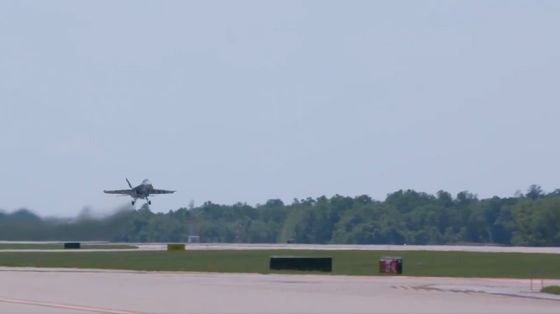Boeing's unmanned aerial vehicle 'MQ-25 Stingray' succeeds in aerial refueling for the first time in history

On June 4, 2021 local time, the US Navy succeeded in aerial refueling test to '
Fueling the Future: MQ-25 first to conduct unmanned aerial tanking> United States Navy> News-Stories
https://www.navy.mil/Press-Office/News-Stories/Article/2647709/fueling-the-future-mq-25-first-to-conduct-unmanned-aerial-tanking/
Boeing drone refuels Navy fighter jet for the first time | Fox News
https://www.foxnews.com/science/boeing-drone-refuels-navy-fighter-jet-first-time
The US Navy announced plans to introduce an unmanned aerial refueling aircraft of the same size as the F / A-18 in 2016, and signed a development contract with Boeing for $ 805 million in 2018. Then, on June 4, 2021, the F / A-18 on which the pilot was aboard approached the MQ-25, a test aircraft that took off from the airport in Illinois, and succeeded in connecting the refueling hose and receiving refueling.
You can see how the MQ-25 is actually refueled in the air from the F / A-18 in the following movie.
Aviation history!
— US Navy (@USNavy) June 7, 2021
“This flight lays the foundation for integration into the carrier environment, allowing for greater capability toward manned-unmanned teaming concepts.” # MQ25 is the first unmanned aircraft to ever refuel another aircraft.
STORY ➡️ https://t.co/ktUc25G7hW pic.twitter.com/1flwSBuMUD
This is the MQ-25 developed and manufactured by Boeing. Being an unmanned aerial vehicle, there is no cockpit for pilots to board.
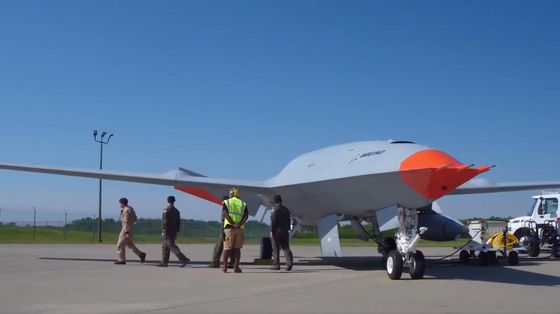
Two pilots will be on board the F / A-18.
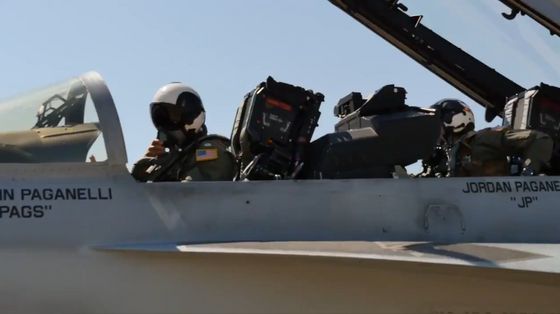
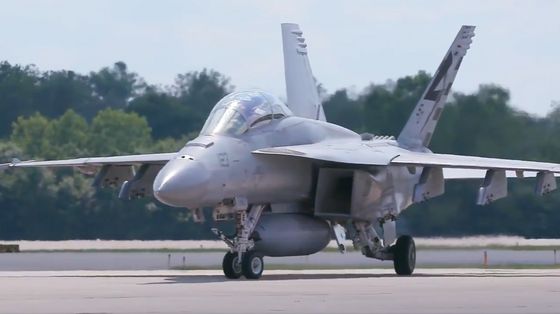
First of all, MQ-25 took off ...
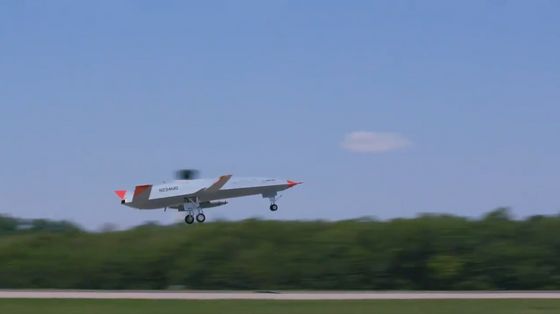
In the image below, the refueling hose (drogue) extends from the refueling pod on the abdomen of the MQ-25. In a method called 'probe and drogue,' the aircraft to be refueled inserts its own refueling pipe (probe) into the umbrella-shaped part at the tip of the drogue to receive refueling.
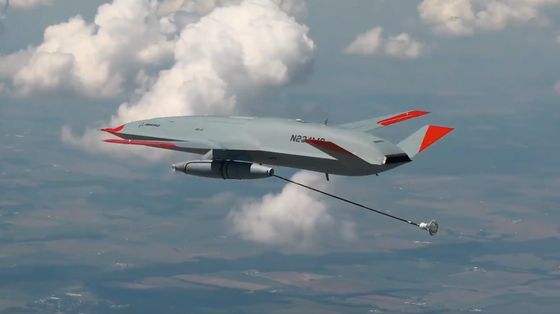
F / A-18 approaches the drogue extending from MQ-25 ...
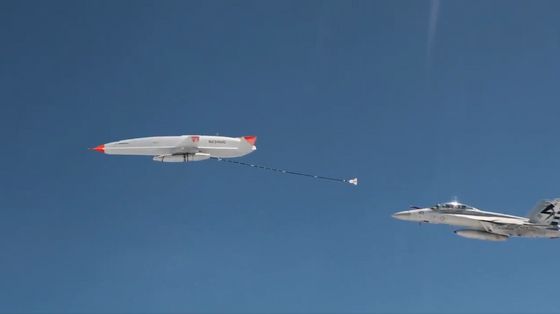
Succeeded in refueling by inserting the refueling pipe on the right side of the aircraft into the drogue. Both aircraft were refueling close to each other at a distance of only 20 feet.
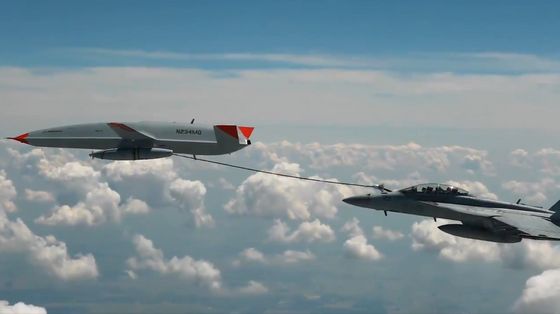
In this test flight, not only the guidance and control associated with refueling were evaluated, but also data on the MQ-25's wake and the interaction of approaching aircraft were collected. The Navy and Boeing will analyze these data in detail to determine whether to make further adjustments to the MQ-25's software.
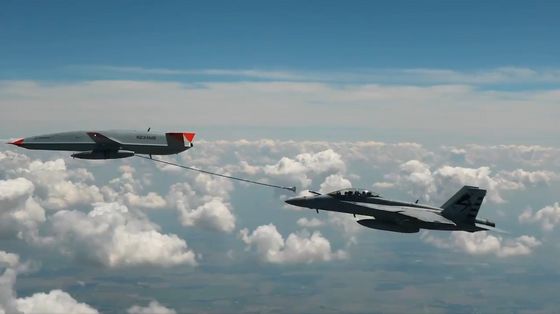
Maj. Gen. Brian Corey, who oversees the program secretariat for unmanned aerial vehicles and offensive weapons, said, 'This flight lays the foundation for integrating unmanned aerial vehicles into the carrier environment and brings greater capabilities towards the concept of manned and unmanned team formation. 'The MQ-25 will significantly improve the cruising range and durability of future carrier air wing,' he said.
In addition, Colonel Chad Reed, manager of the Navy's unmanned aerial vehicle program office, said that the MQ-25 would act as an aerial refueling aircraft, freeing the fighter F / A-18 from the role of aerial refueling and carrier air wing. Claims to be able to provide greater flexibility and capabilities to the team. 'Seeing the MQ-25 perform its important task of fueling the F / A-18 is a very important and exciting moment for the Navy, bringing the MQ-25's capabilities to the fleet. It shows concrete progress towards practical use. '
The test using the MQ-25 is scheduled to continue for several months, and in the latter half of 2021, we will actually demonstrate using the aircraft carrier deck.
Related Posts:
